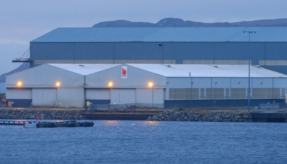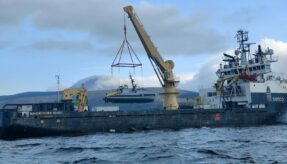
The year is 1985. The apparent “Glasnost” and “Perestroika” have been shown to be nothing more than Soviet maskirovka to hide the awful truth – a mass invasion of Warsaw Pact forces across the inter-German border.
As the NATO alliance marshals itself to prevent the 3rd Shock Army from reaching the Rhine, the armies of Western Europe can do little more than slow the armoured onslaught until, in the words of Winston Churchill, “the New World, with all its power and might, steps forth to the rescue and the liberation of the old”. Unless heavy reinforcements arrive by sea in timely fashion, without serious interdiction, the free world is lost.
Standing in the way of NATO to deliver the much-needed reinforcements are the Naval Aviation wings of the Soviet Northern Fleet. Long-range Tupolev Badger and Backfire bombers carrying radar-guided anti-ship missiles sortie from their bases on the Kola peninsula, evade the standing NATO CAP over northern Norway, and launch their missiles at NATO ships from beyond visual range. Once the missiles are in the air, only the local defensive systems of the individual ships can stop them meeting an explosive fate.

The details of one defensive system, developed by Societe E Lacroix, have recently been declassified and published in a patent application filed in 1976 (GB1,605,462). It describes a decoy-launching system for creating a cloud of material, such as electromagnetic decoys – or chaff – which can confuse the guidance system of an approaching missile.
The key to the invention is effective dispersal of the decoy material, and it achieves this by use of a rocket launcher with a number of cylindrical cases, each carrying a payload of decoy material. This material can be ejected by detonation of an expulsion charge. The cylindrical cases are pivotally mounted on the launcher so that, just before the payloads are ejected, they are displaced outwardly from the axis of the launcher into their firing positions to create a cloud of decoy material. In addition, the launcher includes a fixed, forward-facing cylindrical case containing a decoy material, which can be ejected once the nose cap of the launcher has been ejected.
Had military conflict arisen in the North Atlantic back in the 1980s, there can be no doubt that countermeasures such as the one described in this patent would have played a major part in defending the fleet from harm. Of course, the secrecy surrounding such measures would have meant that few people would have known the extent of these countermeasures. Reading patents such as this and finding out about the technologies that were available back in the day, is very reassuring.
Nick Wallin is a partner and patent attorney at intellectual property firm, Withers & Rogers. He specialises in advising clients in the electronics, communications and defence sectors.
If you would like to join our community and read more articles like this then please click here.







